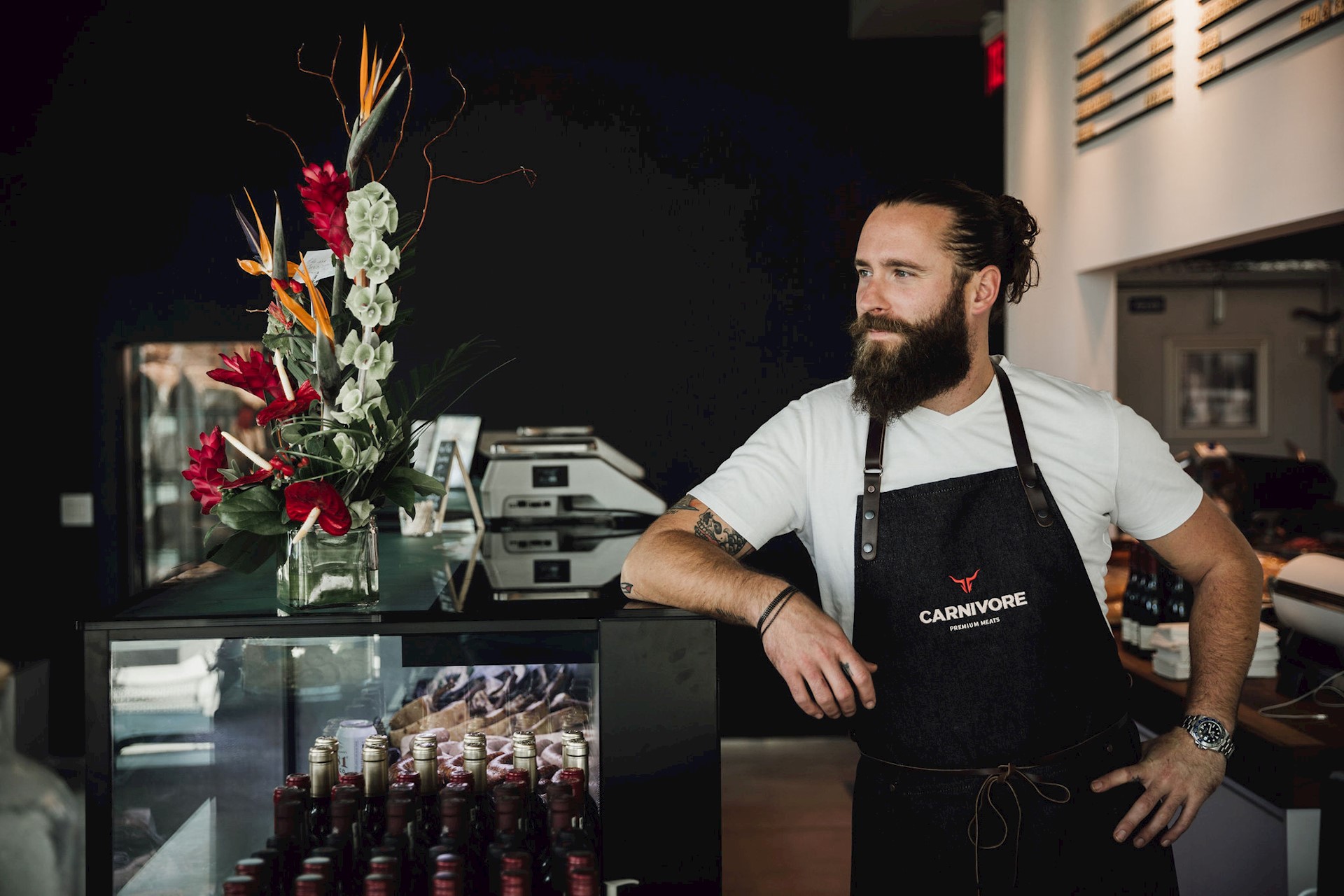

Dry aging beef is a time-consuming process that requires three key elements: a premium cut of meat, a controlled environment and time.
While beef is aging, it is stored and monitored in a purpose-built room that keeps the temperature, humidity and air movement constant to ensure the beef is kept within safe parameters. Natural enzymes called calpains break down the internal meat fibres, increasing the tenderness of the finished steak, and air movement is closely monitored to control the evaporation of moisture which causes the concentration of beef flavour. Together, these processes ultimately render a uniquely flavoured and very tender cut of beef.
The flavour of aged beef varies depending on the breed of cattle, evaporation amounts and the aging process, but the taste is most commonly described as a concentrated, nutty, oaky or earthy. Some dry-aged beef might even have a hint of blue cheese or buttered popcorn flavours. A short dry age such as 30 days will result in a milder flavour enhancement, whereas a longer dry age like 60 days creates a strong nutty beef flavour and 75+ days will have an intense flavour that can be overbearing to the uninitiated.
Everyone who enjoys dry-aged meat has a different preference when it comes to the age of the steak; however, the minimum amount of time beef should age before there is a mildly noticeable effect is 21 days. Around 30 days is the average, but I’ve personally aged beef up to 90 days and beyond with fantastic results.
When it comes to aging beef, not all cuts are created equal. Shortloin, bone-in striploin, bone-in ribeye and sirloin are among the best cuts to age because they have excellent marbling and a natural layer of fat — known as the "fat cap" — to protect them from over-evaporation and oxygen exposure during the aging process. Once the beef is aged, the majority of this fat as well as the dried exterior known as “bark” is trimmed away, exposing the tender, flavourful meat inside. Up to 30% of the meat is typically lost during the aging process due to evaporation and trimming and that percentage will increase the longer the meat is aged.
Dry aging of other meats such as pork, lamb or poultry is uncommon, but not unheard of. Dry aging lamb renders a very distinct flavour and once you’ve tasted dry-aged duck breast, you’ll have a hard time ever again enjoying a regular duck breast. The flavour and texture of dry-aged duck is unique — creamy and unctuous and the moisture evaporation results in extraordinarily crispy skin reminiscent of chicharrones when pan fried.
This article originally appeared in the October 2020 print edition of Camana Bay Times with the headline "The basics of dry-aged beef".

About the author
Dylan Benoit is the executive chef of Prime Group and the chef partner of Carnivore Premium Meats in Camana Bay. Dylan is also the host of the "Fire Masters" television show in Canada.